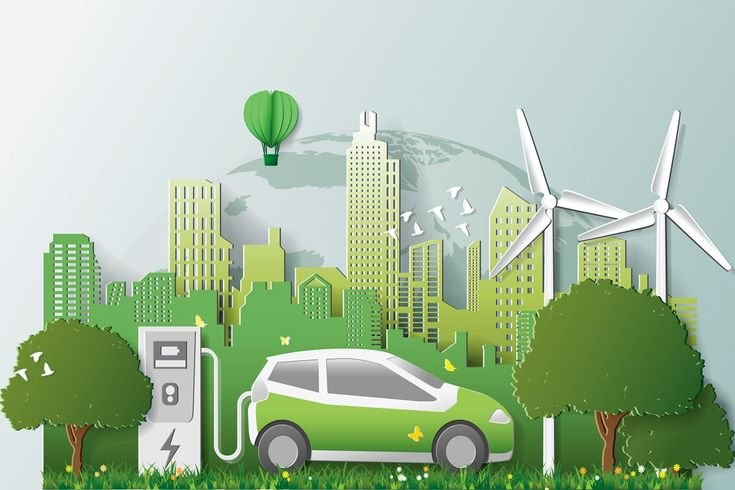As the world increasingly shifts towards sustainable and eco-friendly technologies, Hybrid Electric Vehicles (HEVs) have emerged as a pivotal innovation in the automotive industry. Combining the benefits of traditional internal combustion engines and electric power, HEVs offer a balanced approach to reducing emissions and improving fuel efficiency. This blog explores the intricacies of hybrid electric vehicles, their advantages, types, and the future prospects of this transformative technology.
What is a Hybrid Electric Vehicle?
A Hybrid Electric Vehicle (HEV) integrates a conventional internal combustion engine (ICE) with an electric propulsion system. This dual-system approach allows HEVs to leverage the strengths of both power sources, optimizing performance and efficiency.
Key Components of HEVs:
- Internal Combustion Engine (ICE): Typically powered by gasoline or diesel, the ICE provides power for driving at higher speeds and recharges the electric battery through regenerative braking.
- Electric Motor: The electric motor assists the ICE during acceleration, powers the vehicle at low speeds, and can sometimes operate the vehicle independently.
- Battery Pack: Stores electrical energy for the electric motor, recharged through regenerative braking and sometimes by the ICE.
- Regenerative Braking System: Captures energy usually lost during braking and converts it into electricity to recharge the battery.
Types of Hybrid Electric Vehicles
HEVs come in various configurations, each offering different levels of efficiency and reliance on electric power:
- Mild Hybrid (MHEV):
- Uses a small electric motor to assist the ICE, primarily during acceleration and cruising.
- Cannot operate solely on electric power.
- Example: Honda Civic Hybrid.
- Full Hybrid (FHEV):
- Can run on the electric motor alone, the ICE alone, or a combination of both.
- Offers significant fuel savings and reduced emissions.
- Example: Toyota Prius.
- Plug-in Hybrid (PHEV):
- Features a larger battery that can be recharged by plugging into an external power source.
- Can travel longer distances on electric power alone compared to FHEVs.
- Example: Chevrolet Volt.
Advantages of Hybrid Electric Vehicles
- Fuel Efficiency:
- HEVs offer superior fuel efficiency compared to conventional vehicles by utilizing electric power for city driving and ICE for highway driving.
- Reduced Emissions:
- By combining electric and gasoline power, HEVs significantly reduce harmful emissions, contributing to cleaner air and a lower carbon footprint.
- Cost Savings:
- Lower fuel consumption translates into cost savings for drivers. Additionally, many regions offer tax incentives and rebates for HEV owners.
- Regenerative Braking:
- HEVs capture energy during braking that would otherwise be lost, improving overall energy efficiency.
- Versatility:
- HEVs offer the convenience of traditional gasoline vehicles while providing the environmental benefits of electric power.
Challenges and Considerations
While HEVs present numerous benefits, there are challenges to consider:
- Higher Initial Cost:
- HEVs are generally more expensive to purchase than their conventional counterparts due to the complexity of their dual power systems.
- Battery Life and Replacement:
- The lifespan of HEV batteries can be a concern, and replacing them can be costly, although advancements are continually improving battery longevity.
- Weight and Space:
- The addition of an electric motor and battery pack increases the vehicle’s weight and can reduce cargo space.
The Future of Hybrid Electric Vehicles
The future of HEVs looks promising as technological advancements continue to address current limitations and enhance vehicle performance. Several trends are shaping the future of HEVs:
- Improved Battery Technology:
- Ongoing research in battery technology aims to increase energy density, reduce costs, and extend the lifespan of HEV batteries.
- Integration with Renewable Energy:
- As renewable energy sources like solar and wind power become more prevalent, recharging PHEVs with clean energy will further reduce their environmental impact.
- Smart and Connected Vehicles:
- The integration of IoT and smart technologies in HEVs will enable more efficient energy management, predictive maintenance, and enhanced driving experiences.
- Government Policies and Incentives:
- Stronger government policies promoting clean energy and stricter emission regulations will drive the adoption of HEVs.
Conclusion
Hybrid Electric Vehicles represent a significant step towards sustainable transportation, offering a practical and efficient solution to reduce emissions and fuel consumption. As technology evolves and the world becomes more environmentally conscious, HEVs will continue to play a crucial role in the transition to greener mobility. By understanding the benefits and challenges of HEVs, consumers can make informed decisions that contribute to a more sustainable future.





